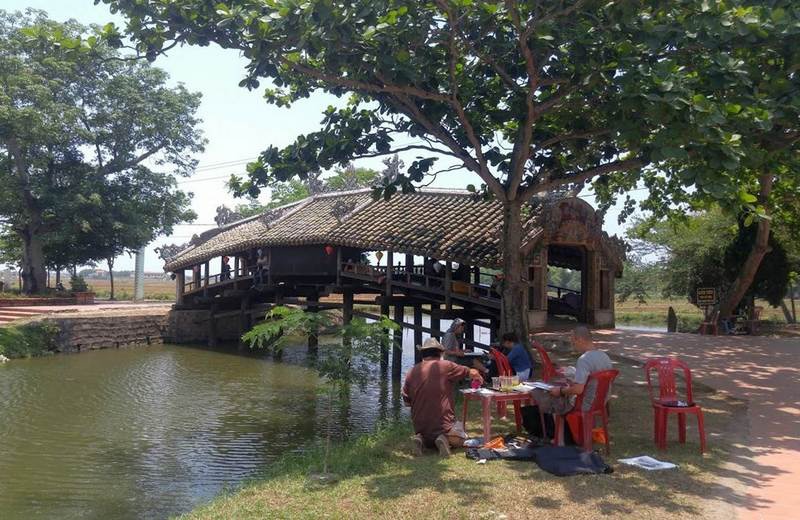Beside the other excellent answer to this question, i would like to provide some piece of information to why Vietnamese usually walk barefoot in medieval time.
Namely road and bridge network.
The corner stone of Vietnamese social and government was not household nor individual, but it was village. The emperor would rule the government make up of royalty family member, noble and talented people who pass the Imperial exam, then the government would pass policy, ruling, drafting and collect tax to the village. It is through a village council make up of the most respected and advance in age villager that those policy, ruling, request and tax would be applied. There is a saying that the power of the king stop at the entrance to the village. Anyway, what does that mean was that even though the emperor would rule the country in the big picture, lots of “daily task” to keep the country running is up to the local authority/ village, which is also including building and maintain the road system between villages.
As there was no organization dedicate to govern, build and maintain the road system, except a few stone road in capital and royal palace, most of the road back in Vietnam medieval time would be dirt road with width vary depend on the traffic, with the minimum width enough for 1 person to walk normally to the maximum width about the size of nowadays 4 lane road, enough space for people, cart and animal such as horse and cow to travel with ease.
So to travel from 1 village to next village, you travel on dirt road. To travel from your house to your rice field, you travel on dirt road. To travel to the big town, you travel on, guess what, dirt road. And dirt road is all fine and dandy, that is until rain season, or a simple flood would do. Dirt road turn into muddy road, and mud is slipper, especially if you use the footwear that was excellent portrayed and described in other answer. So the answer become rather simple, go barefoot.
That is it about the road system, now if you kindly look at Vietnam map, you can see that except the Central part of Vietnam, both North and South Vietnam, with Red River Delta and Mekong delta respective, are mostly flat flood plain divided by countless big and small river, some of the small river are man-made with the purpose of control the flood, changing the direction of river or to lead water to the rice field. The width of those river can range from as small as a few meters to a few hundred meters. So to cross those bodies of water, there are a few option come to mind.
For the less travel road that goes across small river that a few meters wide, a simple bridge made from several bamboo tree or wood will do the trick, namely Monkey bridge.

Guess what kind of footwear is best when travel across this kind of bridge? That right, sandal, and if you don’t have sandal, barefoot.
For the more travel road, you can expect more stable and less challenge kind of bridge, such as wooden and stone bridge big enough for horse cart.


Leaving small river, for big river, it is more troublesome. As big river tend to have violent flood yearly, rather than building bridge ancient Vietnam people relied on a simple type of ferry, employing small boat that can transport dozen of people at a time to cross the river. Again, guess what kind of footwear is best to get on/ off the boat, knowing that the river bank is pretty muddy and thus slippery? Barefoot is the oblivious answer.
So, in conclusion, Vietnamese didn’t walking barefoot because it is traditionally, rather it was a cheap and simple solution to a slippery living environment.
If you somehow find out a way to travel to ancient Vietnam, there are 2 advice i can give you: get as many writing document as you can, those are priceless to modern Vietnamese historian, and leave your favorite footwear at home, because ya know… mud.

